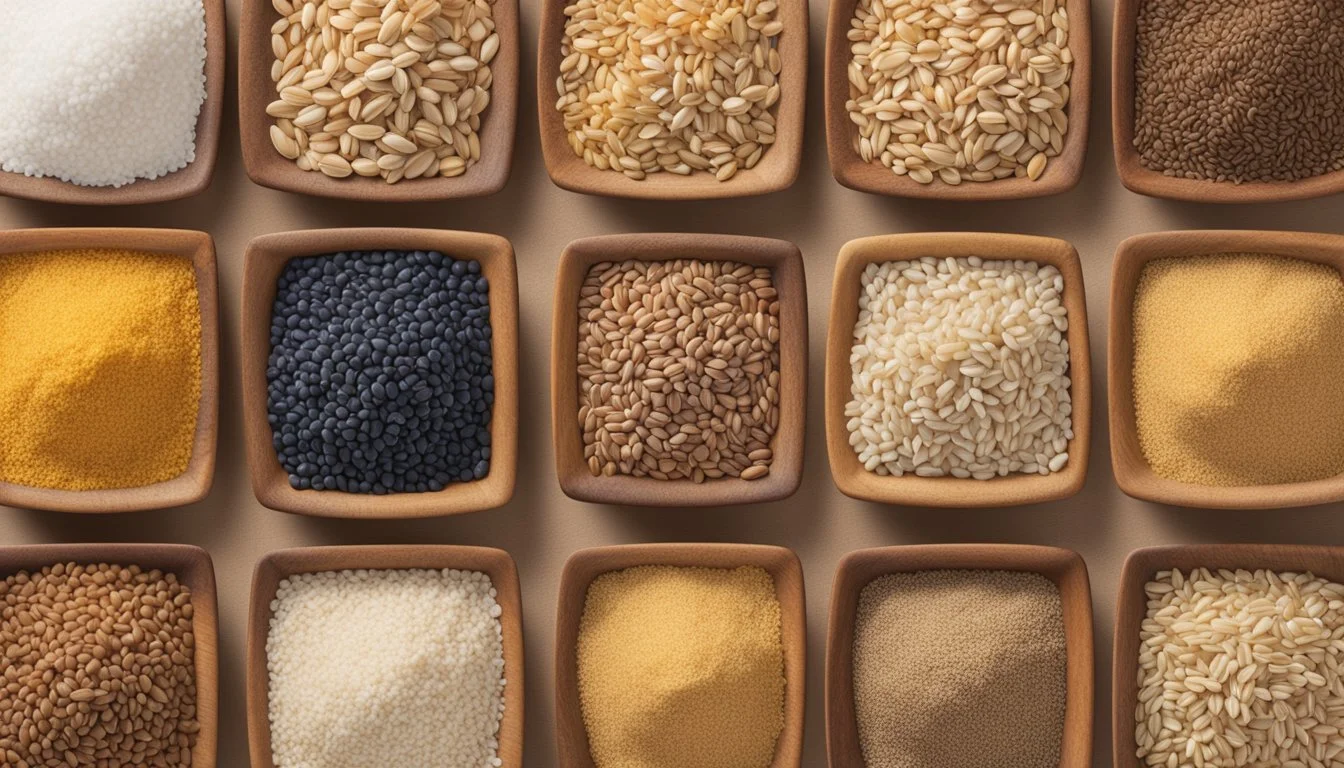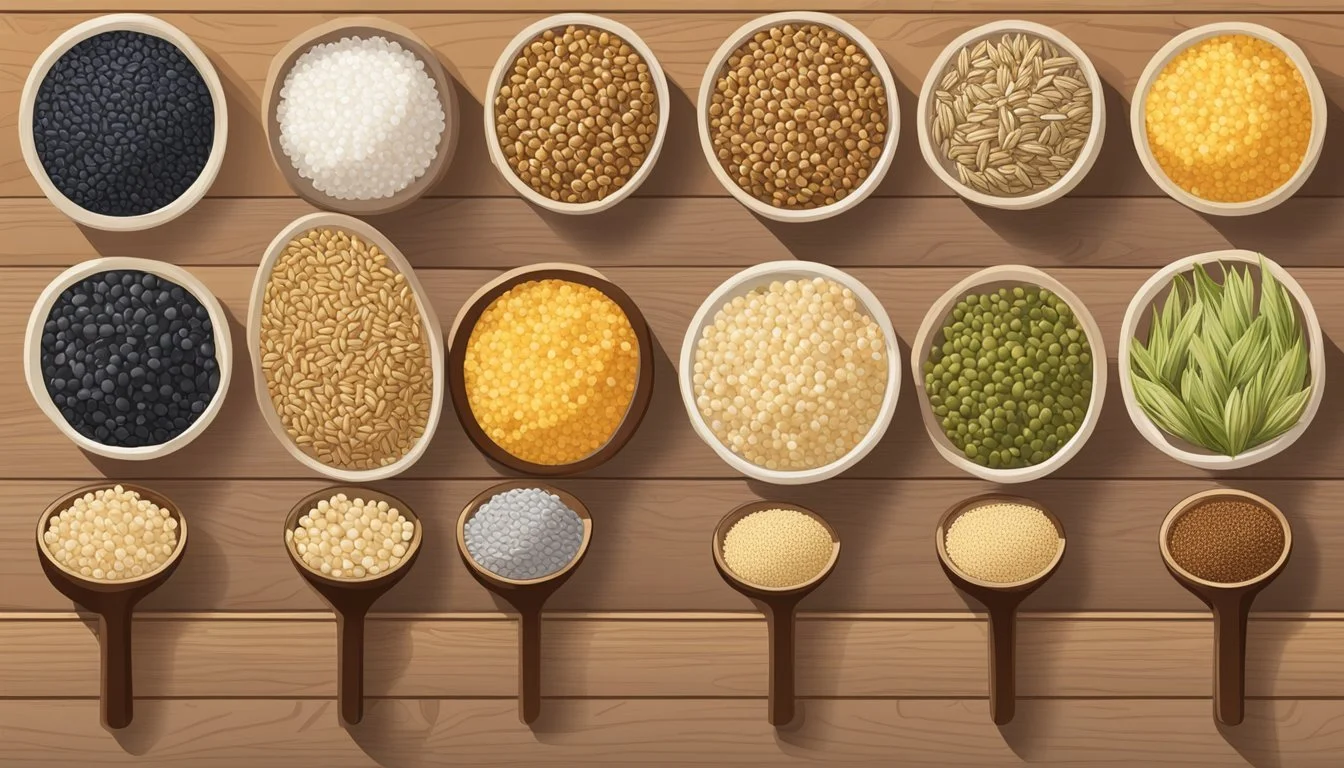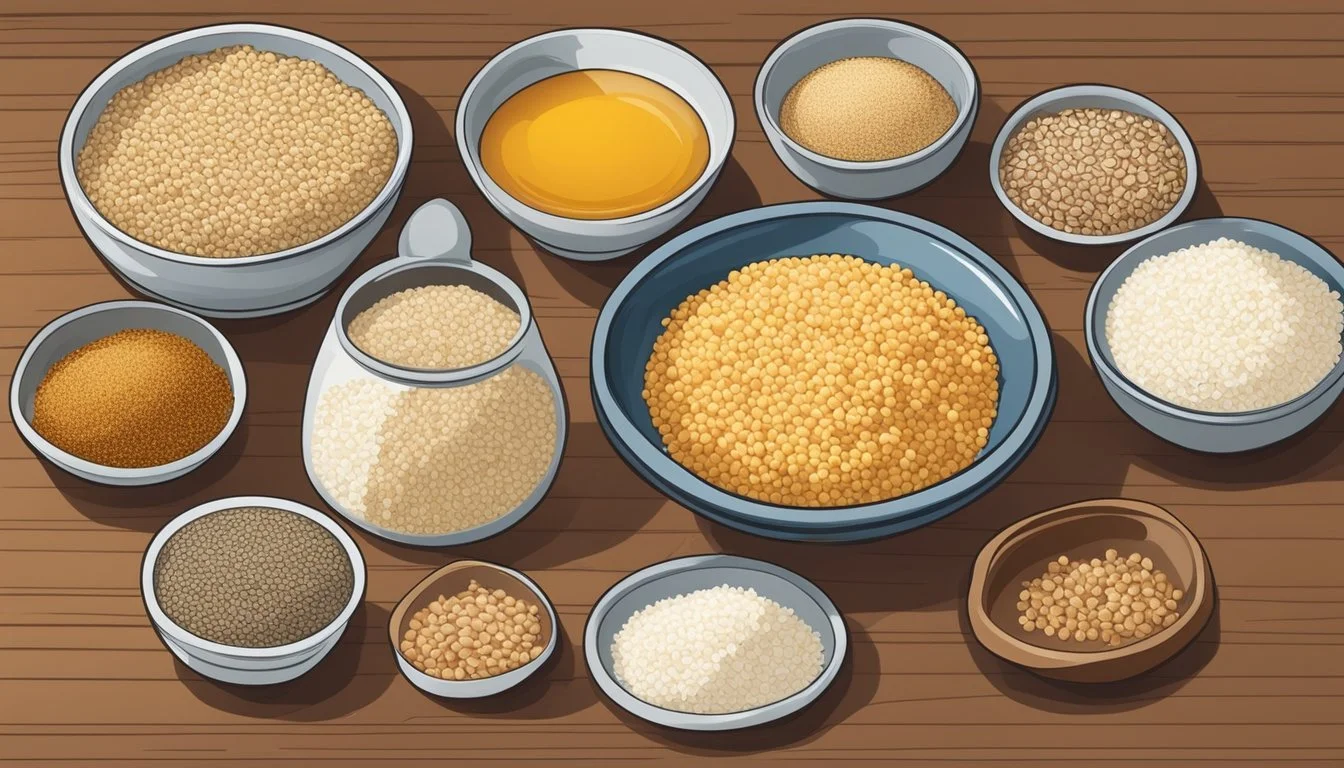Arborio Rice Substitutes
Best Alternatives for Risotto
Finding the right substitutes for Arborio rice can elevate the consistency and flavor of your dishes, especially when crafting a delicious risotto. For those who find themselves without this starchy rice, several alternatives can deliver a similar creamy texture and delightful taste. Basmati rice emerges as a standout substitute for Arborio rice in many recipes, providing a light nutty flavor and floral aroma that complements a variety of dishes.
Other notable substitutes include farro, a grain known for its hearty nature and health benefits, perfect for creating a robust main dish. From barley to sushi rice, there are a myriad of options that can provide the essential creaminess characteristic of an authentic risotto. Not only do these substitutes maintain the culinary integrity of your dish, but they also offer unique flavors and textures, ensuring a satisfying and memorable meal.
Understanding Arborio Rice
Arborio rice is renowned for its high starch content, predominantly in the form of amylopectin. This starch contributes to the rice's signature creamy consistency when cooked, making it a staple in many Italian dishes, especially risotto.
When cooked, Arborio rice releases its starch, creating a velvety texture. This process is essential for achieving the creamy consistency desired in risotto. Its unique texture and ability to absorb flavors make it a preferred choice among chefs.
The flavor profile of Arborio rice is mild, allowing it to complement various ingredients without overpowering them. This characteristic is especially beneficial in dishes like risotto, where the rice enhances the flavors of other ingredients.
Here's a quick overview:
Property Description Starch Content High, with amylopectin Creamy Consistency Achieved through slow starch release Texture Velvety and absorbent Flavor Profile Mild, enhancing other ingredients Common Use Risotto and other Italian dishes
The high amylopectin content in Arborio rice differentiates it from other rice varieties. This component is crucial for the creamy texture that defines risotto.
In Italian cuisine, Arborio rice's ability to absorb and enhance flavors makes it a versatile ingredient. Its creamy consistency is achieved through a meticulous cooking process that allows the starch to be gradually released.
By maintaining its unique texture and flavor profile, Arborio rice remains an integral part of traditional Italian dishes, providing a rich, creamy base for various recipes.
Characteristics of Arborio Rice Substitutes
Arborio rice substitutes exhibit a range of characteristics that affect their suitability in different recipes. Key areas of comparison include grain size and texture, nutritional content, and flavor profiles.
Grain Size and Texture Variations
Substitutes for Arborio rice like Carnaroli and Vialone Nano are well-regarded for their use in risotto due to similar starch content. These grains are shorter and plumper, retaining the creamy texture.
Basmati and long-grain rice options, while longer and thinner, provide a unique texture but lack the starchiness, offering a less creamy, but still desirable, dish.
Short-grain brown rice offers a chewy texture. This makes it suitable in recipes calling for a bit more bite compared to the soft, creamy consistency of Arborio.
Nutritional Content Differences
Nutritional profiles vary considerably among substitutes. Quinoa stands out with superior protein content compared to most rice. It's a great choice for those seeking a high-protein, nutritious alternative.
Short-grain brown rice retains its fiber, vitamins, and minerals, offering a more nutrient-dense option. Vialone Nano and Carnaroli rice are closer to Arborio nutritionally but may have slight variations in iron and fiber content.
Given the variety, the choice of substitute can depend on whether the emphasis is on protein, fiber, or complete nutrient profiles.
Flavor Distinctions
The flavor profiles of Arborio rice substitutes also vary. Quinoa has a light nutty flavor that pairs well with many dishes.
Basmati rice has a light nutty aroma and a distinct floral note, making it popular in dishes where these flavors are desired.
Short-grain brown rice carries a mild, earthy flavor, distinctive due to its bran layer. Carnaroli and Vialone Nano maintain a sweet and nutty taste, enhancing the creamy texture in risotto without altering the classic flavor profile significantly.
These distinctions help in selecting a substitute that best matches the intended culinary outcome.
Top Substitutes for Arborio Rice
Finding the right substitute for Arborio rice requires understanding the specific qualities you’re looking to replace, such as the starchiness that gives risotto its creamy texture or the wholesome fiber content found in some whole grains.
Italian Varieties Replacement
Carnaroli Rice and Vialone Nano Rice are often considered the best substitutes within the Italian cuisine. Both varieties have a high starch content, essential for achieving the creamy texture classic to Arborio-based dishes. Carnaroli is often favored by chefs for its ability to retain firmness while being creamy. Vialone Nano is smaller and absorbs flavors well, making risottos rich and flavorful. These options maintain the authenticity of Italian recipes, ensuring minimal compromise on texture and taste.
Short-Grain Alternatives
Sushi Rice and Calrose Rice are excellent short-grain alternatives. While traditionally used in Japanese dishes, sushi rice’s stickiness makes it a viable option for risottos, producing a slightly different, but still creamy texture. Calrose rice, often found in American kitchens, is a medium-grain variety that also releases enough starch to create a smooth consistency. These varieties are readily available and versatile in many culinary applications.
Long-Grain Options
Long-grain options such as Basmati Rice and Jasmine Rice are less starchy but can still be used as substitutes in recipes where a fluffy texture is preferred over creaminess. Basmati rice, known for its aromatic flavor, adds a distinct taste to dishes, while jasmine rice’s slightly sticky nature can enhance certain recipes. Though they do not mimic Arborio's creamy consistency, they are suitable for light and fragrant dishes.
Whole Grain Choices
For those seeking more nutritious alternatives, Short Grain Brown Rice, Pearled Barley, and Farro Wheat are excellent choices. Short grain brown rice retains the bran layer, offering additional fiber and nutrients. Pearled barley, with a chewy texture, adds a unique dimension to dishes while providing more protein and fiber than white rice. Farro wheat, an ancient grain, brings a nutty flavor and nutrient richness to recipes.
Other Grain Alternatives
Quinoa, Orzo Pasta, and Israeli Couscous fit well as unconventional substitutes. Quinoa is high in protein and offers a slightly crunchy texture. Orzo pasta, a rice-shaped pasta, absorbs liquids well and can mimic the appearance of risotto. Israeli couscous, larger and more pearly, offers a unique texture while being versatile in various recipes. These alternatives provide diverse flavors and nutritional benefits while maintaining the integrity of the dish.
These substitutes each bring their own unique qualities, ensuring that whatever the culinary need, there is a suitable replacement for Arborio rice that maintains the dish’s integrity.
Preparation Techniques for Substitutes
When substituting Arborio rice, understanding the cooking methods and adjusting techniques is essential to achieve the desired creamy texture and consistency. Focus on liquid absorption and cooking time, as well as methods to achieve creaminess, regardless of the substitute used.
Cooking Time and Liquid Absorption
Different substitutes have varying cooking times and liquid absorption rates. Calrose rice, a medium-grain rice, requires gradual stirring and a slightly higher liquid-to-rice ratio to release its starch effectively. For Basmati rice, a long-grain variant, a lower liquid ratio is sufficient, but constant stirring is less critical due to its lower starch content.
Quinoa cooks faster than rice and absorbs less liquid. For dishes like risotto, it’s important to monitor the liquid closely and add it incrementally to prevent drying out. Barley and farro have longer cooking times and need ample liquid, making them suitable for hearty dishes where a chewy consistency is acceptable.
Achieving Desired Creaminess
Reaching the creamy texture familiar in Arborio-based risotto demands specific techniques regardless of the substitute. Calrose rice benefits from low, slow cooking and consistent stirring to release its starches gradually. Quinoa requires a different approach; combining it with other creamy ingredients like cheese or broth can help mimic the desired consistency.
Pearl barley and farro can achieve a risotto-like texture when cooked with generous amounts of liquid over low heat. Adding extra starches or blending part of the grain can enhance creaminess. Basmati rice, while less creamy, can be enhanced with additional fats like butter or soft cheeses to improve texture.
Ideal Dishes for Each Substitute
Quinoa
Quinoa can replace arborio rice in various dishes. It works well in rice salads due to its light and fluffy texture. Additionally, quinoa adds a protein boost to soups and stews, making them more nutritious.
Calrose Rice
Calrose rice is an excellent alternative for risotto. Its medium-grain texture allows it to absorb liquids well, creating a creamy consistency. It's ideal for arancini due to its ability to bind together under heat, making it perfect for frying.
Basmati Rice
Basmati rice is suitable for rice salads because of its aromatic quality and long grains that stay separate when cooked. It adds a unique flavor to stews, giving them a slight nutty taste. While not as creamy, it can be used in rice pudding for a fragrant twist.
Short Grain Brown Rice
Short grain brown rice is versatile and works well in soups and stews due to its hearty texture. Its nutrient-rich bran makes it a healthier choice. It is also a good option for arancini when looking for a whole grain substitute.
Conclusion
Arborio Rice Substitutes offer numerous possibilities for cooking. When looking for a replacement, consider factors such as flavor and texture.
Quinoa is high in protein and easy to cook.
Calrose Rice helps achieve the creamy texture desired in risottos.
Basmati Rice offers a nutty flavor and fluffy texture.
Pearled Barley provides more fiber and protein.
Each alternative provides unique benefits.
Versatility is crucial. Many substitutes work well in various recipes—from risottos to pilafs. Adjusting cooking methods may be necessary to achieve similar textures and flavors.
Alternative Grains like farro and pearl barley bring health benefits and can fit into many diets. Each option allows flexibility and creativity in the kitchen.
Choosing the right substitute depends on the dish's requirements and personal preferences. With various options available, there is always a suitable substitute for Arborio rice.






